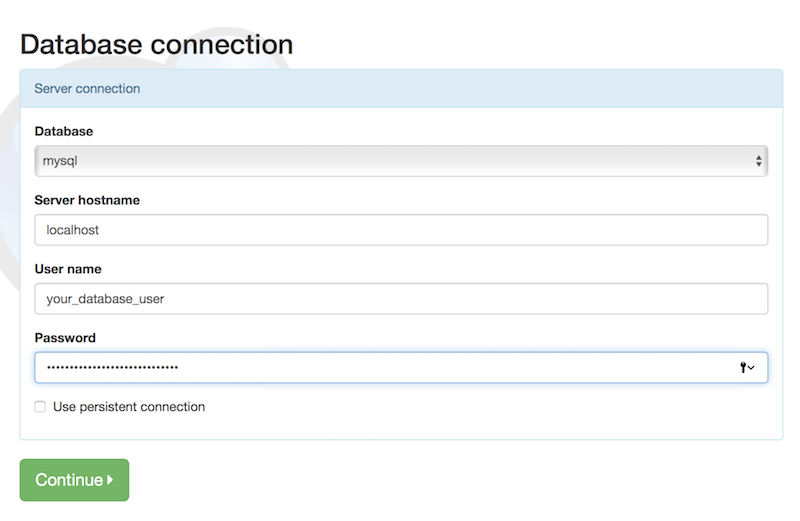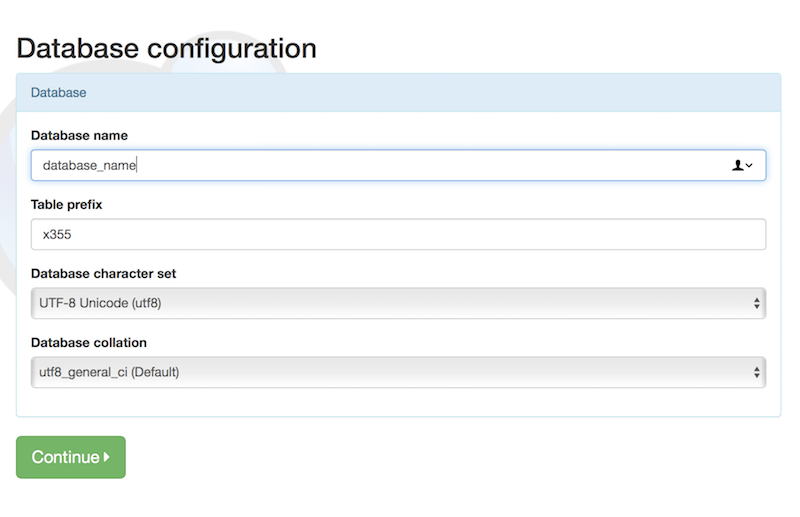Installing XOOPS [version 2.5.9]
You need to follow these steps to install XOOPS:
1. Download the installation from the site of the vendor. It can be obtained from:
http://www.xoops.org/
2. Once you have downloaded the archive that contains the installation, you need to upload it into your disk space.
You can either extract all the files from the downloaded archive and upload them, or you can upload the archive and use the hosting Control Panel's File Manager to extract the package.
The best way to upload big files or multiple files is via FTP. If you are not sure how to upload the files, please check the Uploading files section from our online documentation.
If you are installing the application in your main domain, or in a subdomain, you may need to delete the default index.php file first. You can do this either via FTP, or through your web hosting Control Panel's File Manager.
3. Create a new MySQL database and user for the XOOPS application. For security reasons, MySQL databases and users can be created only through the hosting Control Panel. Detailed instructions on the process are available in our Creating a MySQL database/user article.
Once you have the database and MySQL user created, you should associate the MySQL user with the database by following the instructions from our Associating a MySQL user with a database article. Unless you have a reason to do otherwise, you can select all available privileges for the new MySQL user.
4. Using the Control Panel's File Manager you need to navigate to the location where you extracted the installation and copy the contents of the htdocs directory to the directory you've designated to run XOOPS off of.
5. For security reasons you are strongly advised to rename the folders /xoops_lib/ and /xoops_data/ and to move them to the /private folder on your account.
6. Turn cookies and JavaScript in your browser on.
7. You need to access with your browser the directory in which the extracted files are located. You should see the first page of the installation. Select your language and click "Continue". On the next page, check if you followed all pre-installation instructions and click "Continue". Click "Continue" on the next page as well.
8. If you changed the locations of the /xoops_lib/ and /xoops_data/ folders, you will need to update their locations on the "Paths settings" page and click "Continue".
9. On the next step, you need to configure your database settings. You need to use the following values:
Database: mysql
Server hostname: localhost (for MySQL 5) or 127.0.0.1:3308 (for MySQL 8)
User name: You need to enter the MySQL username you created at your web hosting Control Panel's MySQL section for your application.
Password: You need to enter the password you assigned to your MySQL user.
Use persistent connection: NOT checked.

Click "Continue".
10. On the "Database configuration" page you need to use the following values:
Database name: You need to specify the MySQL database you created for your application.
Table prefix: You should leave this setting to its default value, unless you are installing more than one instance of the application in the same database.
Database character set: You should leave this setting to its default value - utf8
Database collation: You should leave this setting to its default value - utf8_general_ci

Click "Continue" to proceed to the next step. Click "Continue" on the next two pages.
11. On the next step, you need to create an Administrator account. You can use the password generator on the right side of the page to generate a strong password. You need to enter your Administrator e-mail address, choose a username and password and click "Continue". Click "Continue" on the next two pages.
12. Fill in the following data on the new page:
Site name: You need to specify the name of your site. This should be a name of your choice, which could be related to the content of your site, to your name or your company name, or to your domain name for example.
Slogan for your site: The slogan for your company or site.
Debug mode: Off
Meta Keywords: Meta keywords that will help search engines which support this feature find your site.
Meta Description: A description of your site.
Meta Author: Fill in according to your preference.
Meta Copyright: Fill in according to your preference.
Allow new user registration?: Select "Yes" if you want to allow user registrations.
Click "Continue" to proceed to the next step.
13. You need to select a theme for your site and click "Continue" on the next page.
14. On the next step you can select some additional modules for installation. For security reasons, you are strongly advised to install the Protector module. Click "Continue" on the next two pages.
15. Delete the install folder from the account (it may be automatically renamed to install_remove_ by the installer) and click "Continue" to complete the installation.
Important notice: You should monitor the site of the software vendor for any security updates of your installed application.